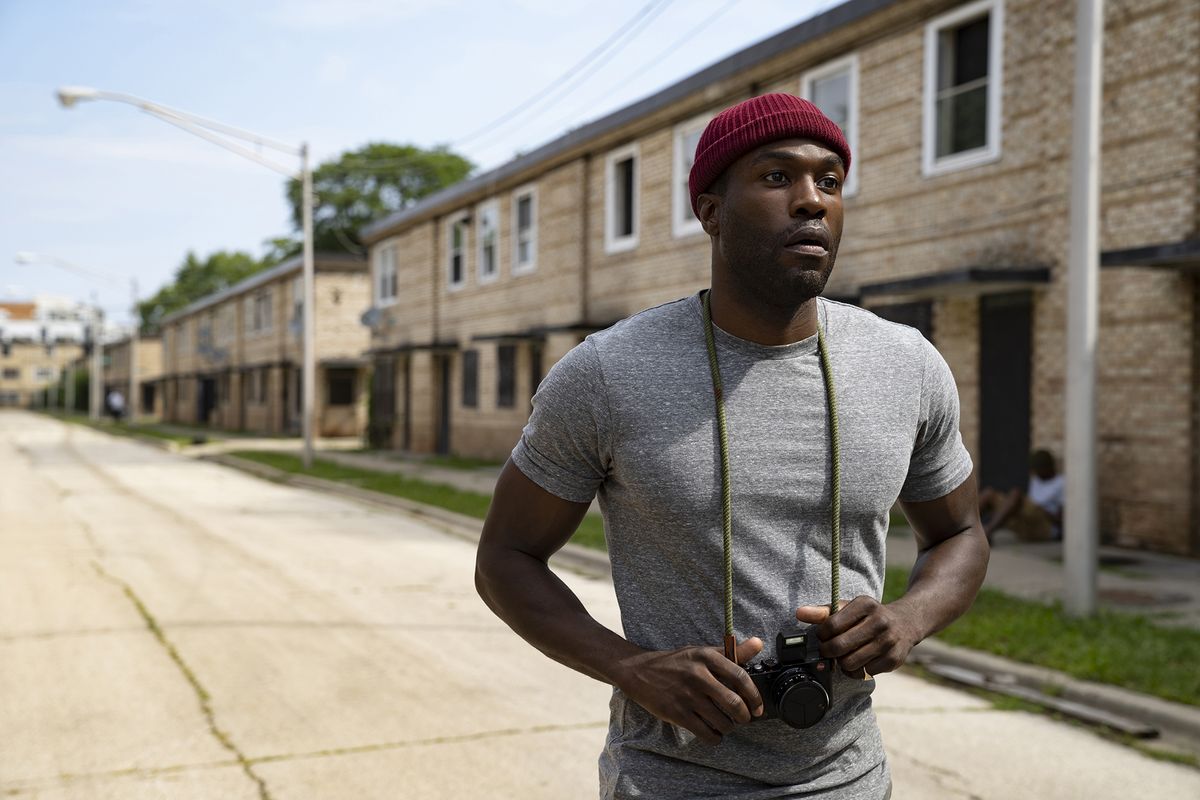‘Candyman’ sequel can’t decide whether to be scary or thoughtful

The new “Candyman,” described by producer Jordan Peele as a spiritual sequel to the 1992 horror film of the same name, is, at its heart, the story of an artist who gets too deep in his own work – so deep that he gets lost. That seems to be true for the film’s protagonist, Anthony (an intense Yahya Abdul-Mateen II), an ambitious, young, Black visual artist who discovers the blood-soaked legends left over from the first film and runs with them, and for Peele, who here shares a writing credit with director Nia DaCosta and Win Rosenfeld.
As with Peele’s directorial efforts, there are lots of intriguing notions toyed with in this film: ideas about gentrification, systemic racism, the figurative ghosts of white America’s haunted past – along with some literal ghosts – and the idea of mirroring, which is threaded throughout “Candyman” from the intentionally backward opening credits to the very end. You could call all that the chewy nougat center of this film, which in many other ways obeys some of the least interesting conventions of the slasher genre. As an example of scary story/social critique, it’s a cut above Peele’s “Us” but far less incisive than his Oscar-winning debut “Get Out.”
Explaining his work, which references our country’s history of racial oppression, to a snooty art critic (Rebecca Spence), Anthony says that his intention is to “calibrate tragedy into a refocused lineage that culminates in the now.” That’s a screenwriter’s joke about pretentious artspeak – there are lots of them – but it’s also a highfalutin way of describing what Peele and company actually seem to be trying to do: digesting the source material and regurgitating it in a new, yet not entirely unrecognizable form – one that touches on some of the most pressing issues of today.
After a short flashback prologue, set during an encounter with Candyman in 1977, the film jumps to 2019. Over wine with his gallery assistant girlfriend Brianna (Teyonah Parris), Brianna’s brother Troy (Nathan Stewart-Jarrett) and Troy’s boyfriend Grady (Kyle Kaminsky) in a luxury loft in the gentrifying neighborhood surrounding the Chicago housing project where the first film was set, Anthony is introduced to a “scary story” told by Troy. It’s a bare-bones retelling of the events of the 1992 film, but distorted by time and flawed memory so that the villain isn’t Tony Todd’s titular hook-handed murderer, an African American man demonized by society, but Virginia Madsen’s Helen Lyle: a white graduate student researching urban myths.
Anthony does a little more homework and finds out that myth – as well as actual history – is never quite so simple, discovering along the way the central superstition of both films: that if you stand in front of a mirror and say “Candyman” five times, you will summon him. (And he will probably then kill you. Why anyone would want to do that – other than to scare people, which it accomplishes quite effectively – is difficult to know.) Encouraged by his art dealer (Brian King), Anthony starts making Candyman-adjacent paintings for the Black Lives Matter age. It’s no accident that the title of one of Anthony’s pieces, “Say My Name,” which incorporates mirrors, evokes both the “Say Their Names” movement and the Candyman legend.
Things do not go well for Anthony and ultimately Brianna, as Anthony uproots more and more haunted history: instances of mental illness, suicide and white-on-Black violence, much of which is only connected to the first film by the thinnest of filaments. (The police here are as scary as Candyman.) Colman Domingo makes an appearance as a man who was a witness to the 1977 Candyman as a child. The actor would normally be a welcome addition to any film, but his character becomes increasingly deranged and nonsensical, despite – or, perhaps, because of – the lecture he delivers, from his serial-killer-style bunker, about how all Black victims of violence become, in a sense, Candymen.
It’s a strange point to be made by a film that otherwise seems to want to undo – or at least unpack – the Black-boogeyman trope propagated by the first film. As mentioned earlier, there’s a lot to chew on here, including, most notably, the blurring of the boundaries between hero and villain, victim and avenger. But is that really what one wants in a horror film, in which those lines are typically much more clearly defined? “Candyman” can’t seem to decide whether it wants to scare you or make you think.